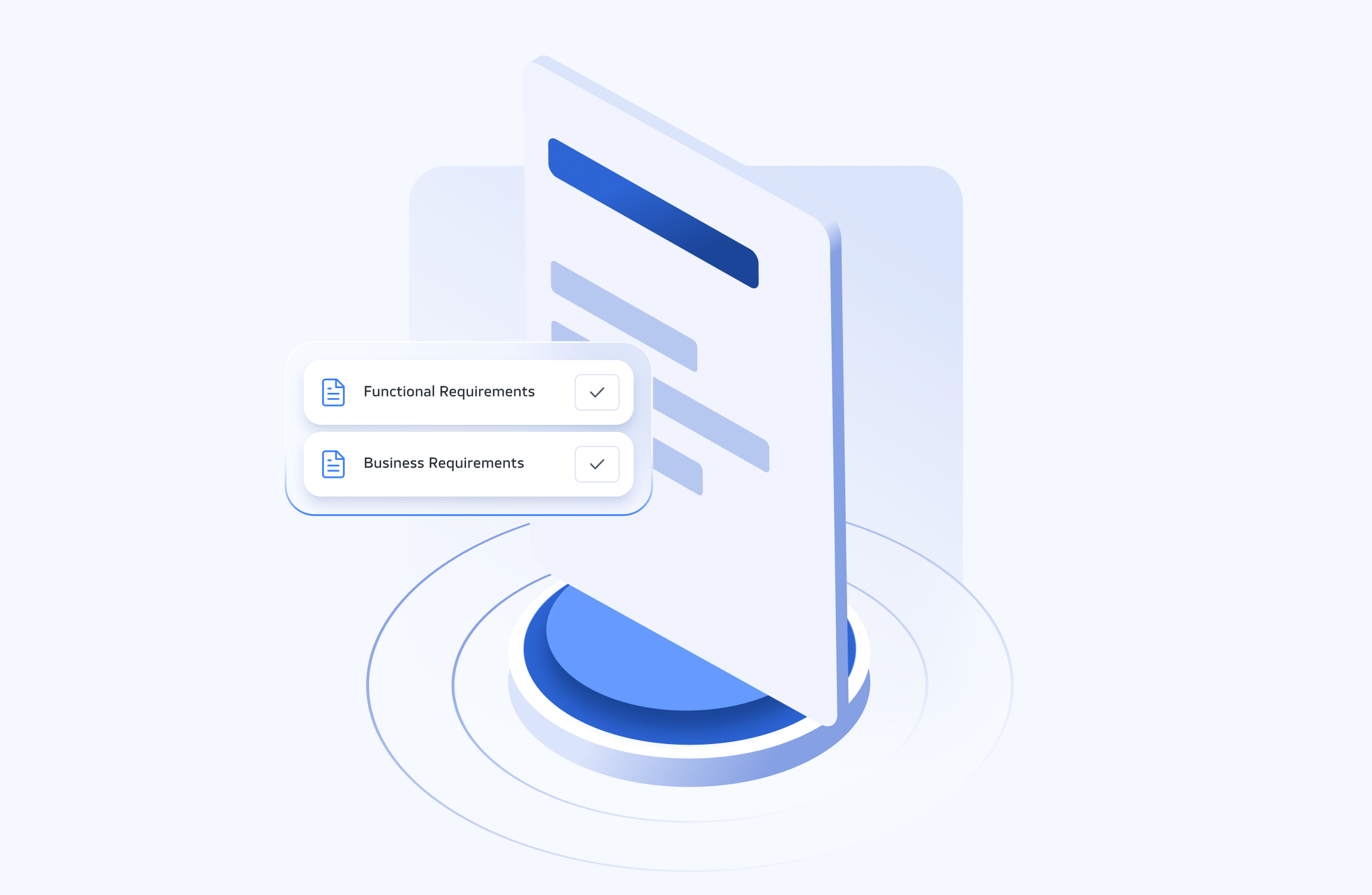When starting a cooperation with a software house, you should provide your potential partner with key information about your project. This is the first step to introduce your project, and it helps the software house clearly understand what needs to be done.
How can you prepare the best software requirement specification (SRS) and write down your idea in an understandable way? What should you include in this document to make it powerful, and why it is so important in the web app development process? Dive into this blog post to get answers to your questions and make a good start with a software house!
What Is a Software Requirement Specification? A Short Definition
An SRS is a document that includes all your IT product requirements. It is an essential element of the project documentation, giving the development team the entire picture of your idea. In other words, it is your idea written down on paper in the most detailed and consistent way possible.
The SRS helps us get acquainted with your expectations, the app’s functionalities, and all your strategies, putting our team on the same page as you.
The document should contain both functional and non-functional requirements. Read on to learn more about those definitions.
A Well-Prepared Technical Specification = Benefits for Both Sides
Preparing a good project specification is a very important first step in working with a software house. Your potential partner uses it to assess the amount of work necessary to complete the project and prepare an IT cost estimate. Behind the effective creation of IT projects stands an understanding of their specificity and your needs. This is why the benefits of preparing a straight-to-the-point document are undeniable.
Writing such documentation is also good practice for you. Collecting all the necessary information in one place allows you to look at the product from a wide perspective and identify any missing elements.
Let’s sum up why it is worth writing a comprehensive project specification:
- It allows the software house to understand your project’s scope and goals. The better we understand the business and tech perspectives, the more efficient the work will be.
- It helps us assess how many people we’ll need to implement the project and how much time we’ll need to create it.
- It provides the necessary information to prepare an IT project cost estimate. By knowing the system and functional requirements in detail, the team understands the needs and can pre-evaluate the costs.
- We can predict if we fit the project and if our partnership will be beneficial for you. By analyzing your technological needs and IT requirements, we can decide whether our current experience and specializations will be enough to complete the project.
It is important to make the document comprehensive and avoid any gaps that make the development team uncertain about your idea. It should be a great resource for them, a guideline to follow during further work. The more accurate the software requirement specification (SRS), accurately reflects your requirements and needs, the easier it will be to implement all the tasks.
It is also worth mentioning that if you have any doubts about what functionalities your dedicated software should include, consider taking part in our valuable product workshops. They will allow you to fully understand how your system operates and get a broader picture of its functionalities. If you want to see what such a workshop looks like in practice, read the article below.
[ebook_workshops_banner]
Inside the Software Requirement Specification: How to Write It
You already know why preparing an appropriate technical specification is a key component of the project’s success. But how do you create a document that clearly defines your requirements? Here is the most important information that should be included in your SRS.
Start with a General Overview
Keep in mind that a well-structured document is easier for your software partner to understand than a poorly structure one. A good introduction means providing all the necessary information about the project in general, such as key information about your application (what it’s built for, the main business goals and needs, and the kind of problem it will solve), and the software’s end-users (who they are, how big the group is, and what their needs are).
This information gives a great project overview and helps your partner understand the entire business context and adjust future activities accordingly.
Functional Requirements in the Software Requirement Specification
- Functionalities. Let’s move on and focus on a detailed description of the most important functionalities. You can use the idea of user stories—that is, presenting the system’s features from the user’s point of view. By using the format “As [who?] I want to [do what?] to [why?]“ (for example, “As a chat user, I want to send attachments to provide you important documents”), you can build a simple path to illustrate how your application should work. Remember to describe what possibilities the user has, including the administrator’s role (for example, the permissions he should have).
While preparing the functional requirements, make sure that the description is accurate. Here’s an example: Imagine that you’re planning to implement a chat functionality. Of course, you can write that the main goal is to ensure smooth communication between users and contain basic functions, but is it a complete description? I wouldn’t be so sure about that. A well-structured one should inform the reader specifically about which users will be communicating via the chat, whether it should include the possibility of group conversations or adding attachments, whether it will work in real-time, and so on. Try to look at it from a wide perspective, taking into account all user activities.
[sneak-peak id=732862]- Priorities. For some large projects, it is worth identifying the top-priority functionalities—it will be much easier to plan future work with this information. The best method to mark priority level is using the MoSCoW method, which is a popular prioritization technique. It is commonly used in business analysis, project management, and software development.
Design
It is also worth considering your application’s design. Include as much information as possible about your expectations. Do you prefer a dedicated design? Or maybe you prefer to use ready-made solutions. All information, tips, and inspiration are more than welcome.
Non-Functional and Business Requirements
The software requirement specification (SRS) must include non-functional requirements—that is, all the information that allows us to comprehensively understand the context of the project. You should describe the most important expectations regarding the quality of the application’s operation:
- The traffic can we expect and at what time (it is closely related to the target group, its size, and frequency of using the system),
- The application’s speed, including the response speed to user inquiries,
- The project deadline (we need to know how much time we have to complete the project),
- The budget is initially allocated to the preparation of the project. It is enough to provide an approximate financial spread,
- The frequency of creating backups,
- The maximum number of users using the application at the same time,
- All necessary information about planned integrations and security requirements,
- Any technological requirements and what they are.
Technical Specification Summary
As you can see, properly preparing a Software Requirement Specification SRS has a visible impact on project implementation. A well-prepared SRS should be accurate, to the point, and contain all the key information regarding functionalities.
Of course, it is worth adding that a professional software house will always ask you the right questions to dig deeper into your project, but the more detailed your technical specification is, the easier it will be to evaluate the project and understand its business context.
Do you want to start a new IT project with a professional software house? Write to us and present your idea. We’ll get back to you with great support.



